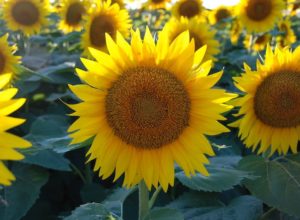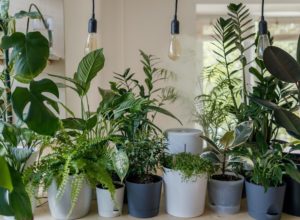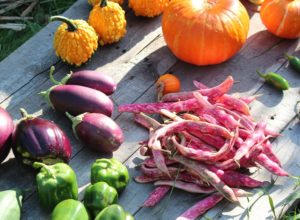January in the tropical garden
by Kathleen Hosking of Solution Focussed
WHAT TO PLANT?
• Plant seeds for snake beans, wing beans, mung beans, peanuts, Asian greens, Komatsuna mustard, okra and rosella and marigolds. Soybeans are best planted in early December. This allows the maximum growing period before the day length shortens and initiates flowering. Soybeans can still be planted in January but the weather may reduce the productivity of the crop. You can extend the cropping period by harvesting young pods to eat green.
• Cuttings of cassava, Aibika, sweet leaf. I have been experimenting with different types of stem cuttings. The most effective seems to be burying a short piece of stem with three nodes under the surface. The new stem and roots will grow from the nodes.
• Corms for taro, both the purple fleck and the small white sweet upland taro, and cocoyam.
• Push cuttings of sweet potatoes into a mound of soil for good drainage.
• Plant celery top taro in wet spots under a downpipe or similar. It does not tolerate dry weather and is a heavy feeder.
• Rhizomes for ginger, turmeric, galangal, Temulawak, sand ginger and Chinese keys in a shady spot
• MAINTAINANCE
• Fertilise regularly with weak liquid fertiliser as it washed away by the heavy rain.
• Mulch any uncovered ground.
• Plant green manure crops where possible using any leftover or older seeds.
• Water during dry spells.
• Empty the first flush diverter after each rain event. Use the water for foliar feeding.
WEEDS, PESTS AND DISEASE
• Weed regularly before they get too large and take over.
• Allow the birds and other wildlife to do the pest control for you.
HARVEST AND PRESERVE
• Harvest young fruit of the white eggplant, okra, capsicum and snake beans regularly to keep the plant fruiting. These are all perennials in the tropics. I process as many mangoes and lychees as possible while they are in season. I freeze mango cheeks removed from the skin for a treat on a hot day and dry trays of mangoes for myself and family. They are a great medium of exchange!
PERMACULTURE PRINCIPLE NO 1: OBSERVE AND INTERACT
• Observation coupled with an open mind would enable easier acceptance of the reality of climate change. It really does need us to think outside the square to accept that what we have been told for decades is not necessarily correct or for our benefit. This is a change from accepting the European vegetables transplanted in earlier times and still culturally acceptable. Further restricting the variety available is the need for uniformity, transportability and a long shelf life for foodstuffs commercially produced for the mass market. Observing and interacting with our own seed in our own backyard will allow us to harvest locally acclimatised seeds of the plants we like to eat. These seeds will change with the changes in the local climate and so will stay relevant and productive as the strongest plants are saved for seed collection.
• Observation of the changes in the local climate and a willingness to think outside the square will initiate an exploration of food crops that suit the climate in our local area. This will involve experimenting with new tastes and textures which may take some getting used to. For the tropical regions there are hundreds of food and medicinal plants which have been successfully used by millions but are still unknown in the mainstream food chain.









